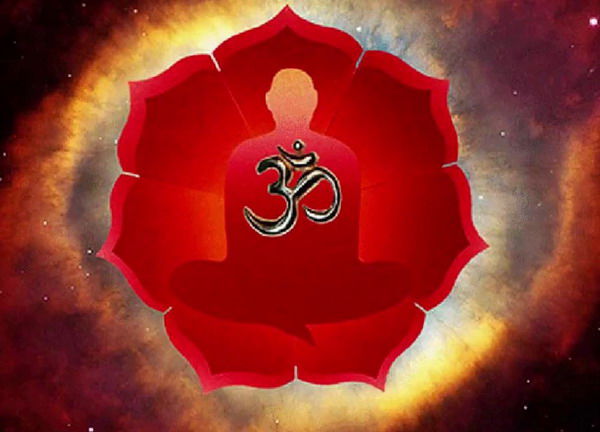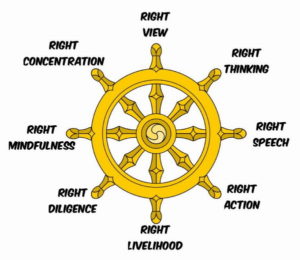What is Dharma


 Dharma can refer to a somewhat vague concept of universal law, a prescription for perceived righteousness and the performance of social duties. It can also imply good qualities, or reflect a relationship with the subtle phenomena, the constituent elements of all existence.
Dharma can refer to a somewhat vague concept of universal law, a prescription for perceived righteousness and the performance of social duties. It can also imply good qualities, or reflect a relationship with the subtle phenomena, the constituent elements of all existence.
Within what is now referred to as Hinduism and Sanatana Dharma, the term is used to denote the “eternal” or absolute set of duties or religiously ordained practices incumbent upon all Hindus, regardless of class, caste, or sect as determined by social and spiritual leaders who may or may not be fully qualified or informed.
Often these definitions don’t make sense and to many, Sanatana Dharma or simply Dharma represents another dogma or set of rules we are expected to live by to perhaps ensure a more harmonious world. Yet if you have your eyes and ears open to what is going on in the world around, one cannot help but notice the injustice, the inequity and our need for a solution to all our problems.
Since the spread of patriarchal capitalism, the idea of Dharma has been corrupted, the sense of Dharma that is being propagated today is much like the Christian ten commandments, a set of rules that we are expected to pay lip service to while engaging in the often adharmic practices* required to survive in the modern world.
CONTEXT REVEALS
It’s my contention that in this modern world, Dharma is the only solution for what ails us, Dharma is the most logical and practical way for humanity to thrive and endure. Dharma is not authoritarian, it is inclusive and democratic, but it requires everyone’s conscious participation.
What we have in common with our most ancient ancestors is to survive, perpetuate ourselves and be happy as do all the other species in existence. What sets us humans apart from the animals is our physical dexterity, adaptability and the evolution of language more recently followed by our ability to chart out evolutionary progress through the medium of creating records.
We would be kidding ourselves if we thought that we were any smarter than our ancient ancestors but we do have the advantage that today we are developing ourselves based on ancestorial knowledge and to find the reason why of Dharma, we must look back some ten or twelve thousand years.
The younger Dryas has ended, planet Earth is becoming more habitable once more and the human population was expanding but this expansion now comes with the memory of the most recent catastrophes. There has been a scarcity of food, atrocious weather, massive floods and sea level rise so as conditions returned, the people of the time began devising a way of ensuring that regardless of what nature may throw, humanity needed a better way of enduring.
This was also a period of physical innovation, language development, the beginnings of agriculture and a sharing of ideas. People were living more closely together so as to share and expand ideas about so many things. In the archaeological record we can chart the progress of their legacy, agriculture, population movements and the centres of civilisation, but what they thought and talked about on a more personal level is difficult for us to comprehend.
The knowledge is embodied within the Vedas and other classical Hindu texts but few are able to fully comprehend the Sanskrit language and even fewer able to extrapolate the meaning of the prose and metaphor, so therefore we must apply logic and reason to understand why the concept of Dharma came into being.
Those distant ancestors well understood the practical necessities of life, food and shelter, and of course procreation. But there is so much more to life such as understanding the why of human emotions, why we were sometimes happy or sad and why we were sometimes joyful and ecstatic.
With the early development of agriculture and an improved sense of food security, the people wanted to be happy and to ensure a stable supply of happiness along with abundant possibilities to be joyful and experience bliss or ecstasy.
Over time it was discovered that almost everyone could learn to behave in a manner that everyone found to be pleasant and the concepts of right view, right thinking, right speech, right action, right activity or livelihood, right diligence or effort, right mindfulness, right concentration combined to produce the ideal conditions whereby every member of the community could find life more pleasant and agreeable.
Dharma is a social model to ensure the survival of your
children and your children’s children into an unforeseeable future
that also supports your happiness and quest for personal liberation,
and the acquisition of universal knowledge while
enabling the participation of every individual
in the act of conscious creation.
Of course not everyone’s mind was adaptable to these ideas which perhaps prompted the Adiyogi to clarify the nature of the human condition and prescribe what we now know as the eight limbs of yoga, tools to restore and maintain a persons humanity.
Today the practise of yoga, of becoming more physically capable and meditative facilitates our ability to deal with strife and to perceive what is necessary for life and what is not. It is from this sense of yoga, of unity and knowing that Dharma life a flower unfolds to share it’s fragrance with all yet it is fully capable of defending itself.
As the growth of consciousness proceeds, every area of life develops – heart, mind, body, environment.
Yoga, properly understood is not a system of giving up life.
It is a system of adding to life.
To conclude, a state of Dharma is the ideal state for human societies and for every individual. It is maintained when we practice kindness and generosity, it is maintained when we dispense praise and gratitude in addition to contemplating and acting on the eight principles. If you wonder if there’s any difference between Sanatana Dharma and Dharma, there are none.
*Adharmic practices – transgressions against nature and harm to others.
Images: Youtube
DISCLAIMER: The author is solely responsible for the views expressed in this article. The author carries the responsibility for citing and/or licensing of images utilized within the text.
